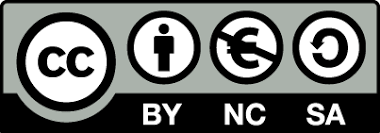Abstract
Dengue virus infection is a global threat for which no specific treatment has not been established. Previous reports suggested chrysin and flavanone derivatives were potential flaviviral inhibitors. Here, we reported two halogenated chrysins, abbreviated FV13 and FV14, were highly potent against DENV1-4 and ZIKV infectivities with the FV13 EC50 values of 2.30 ± 1.04, 1.47 ± 0.86, 2.32 ± 1.46, 1.78 ± 0.72 and 1.65 ± 0.86 μM; and FV14 EC50 values of 2.30 ± 0.92, 2.19 ± 0.31, 1.02 ± 0.31, 1.29 ± 0.60 and 1.39 ± 0.11 μM, respectively. The CC50s to LLC/MK2 of FV13 and FV14 were 44.28 ± 2.90 μM, 42.51 ± 2.53 μM, respectively. Mechanism of drug action studies suggested multiple targets but maximal efficiency was achieved with early post infection treatment. Computational study suggested the target at viral envelope and further optimized the pharmacophore to the stronger binding affinity. Pharmacophore models were generated using trajectories obtained by molecular dynamics (MD) simulations of the dengue envelope E protein complexed with the active inhibitor, flavanone (FN5Y). Subsequently, compounds presented in various drug databases were screened using the LigandScout 4.2 program, molecular docking, followed by extensive MD simulations. The highest-ranked compound from this procedure was then synthesized and tested on its inhibitory efficiency by experimental assays. Moreover, we synthesized two halogenated flavanones, dibromopinocembrin and dibromopinostrobin, and tested against dengue serotype 2 at the EC50s of 2.06 ± 0.75 and 5.86 ± 0.51 μM with at the CC50s of 67.21 ± 0.97 and >100 μM, respectively. Flavanones are more aqueous soluble than flavones therefore they are more suitable for further in vivo experiments. Computational studies suggested the potential target be likely the NS5 methyltransferase. Since flavones and flavanones inhibited viral translation and replication potentially with multiple targets. A flavone was chosen for alkyne addition to the B-ring, resulting in an alkyne-tagged apigenin. The alkyne serves as a chemical tag for the alkyne-azide cycloaddition reaction for subcellular visualization. The compound located at the perinuclear region at 1 and 6 h after infection corresponded to a previous report that apigenin-fixed bead pulled down a ribosomal protein S9. Interestingly, the compound signal started shifting to vesicle-like structures at 6 h and accumulated 24 and 48 h after infection. Moreover, the drug treatment in dengue-infected cells showed that the compound restricted the viral protein inside the vesicles, especially at 48 h, where the dengue envelope proteins spread throughout the cells. The alkyne-tagged apigenin showed stronger efficacies than the originals at the EC50 of 2.36 ± 0.22, and 10.55 ± 3.37 μM, respectively. The cytotoxicities were similar at the CC50 of 70.34 ± 11.79, and 82.82 ± 11.68 μM, respectively. Therefore, the newly synthesized, alkyne-tagged flavone did not interfere with the anti-dengue efficacies and was found in cytoplasmic vesicles inside the cells targeting a previously reported ribosomal protein S9 protein. Molecular docking predicted two RPS9-binding sites of both apigenins with similar affinities. The interaction should attenuate dengue productivity by interfering with viral translation and suppressing the viral proteins from trafficking to the cell surface.


